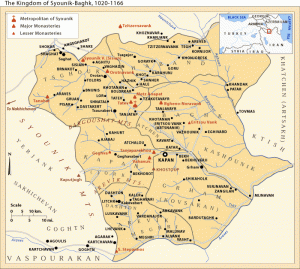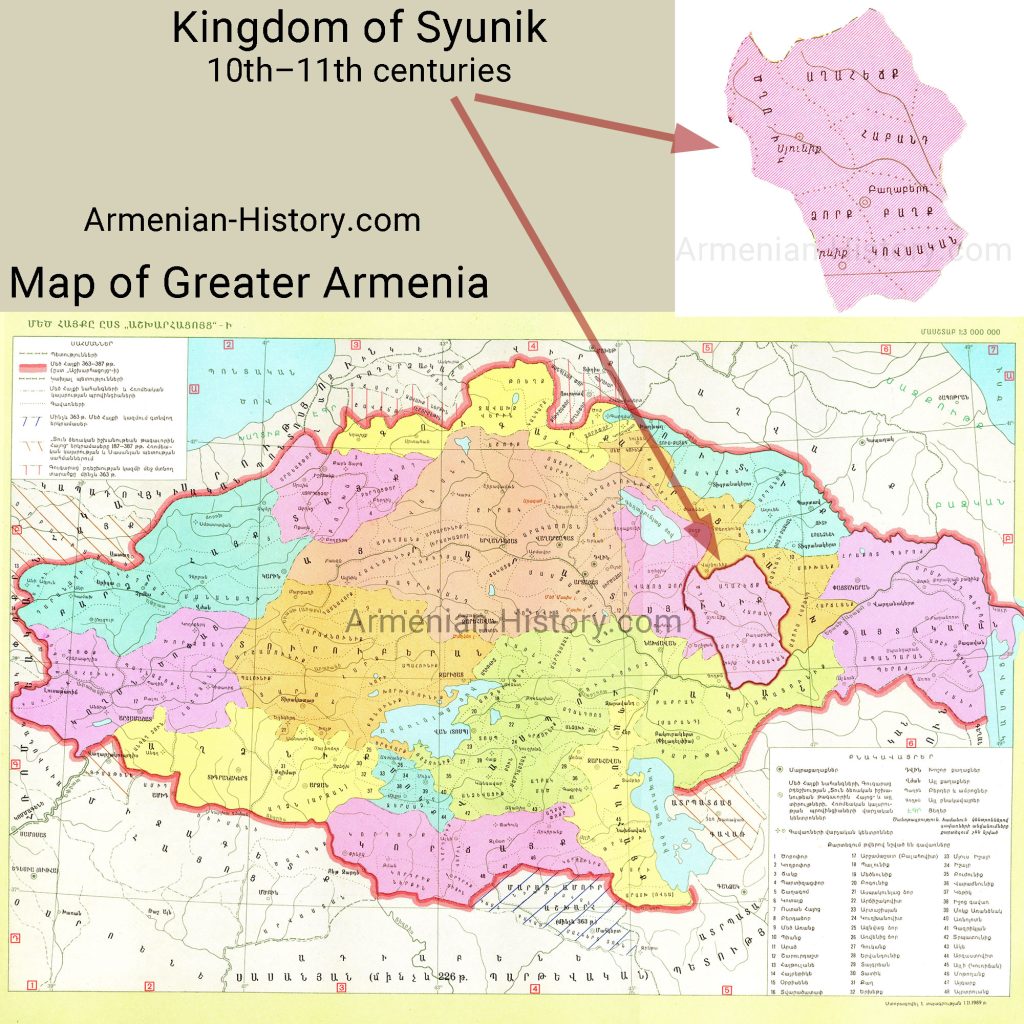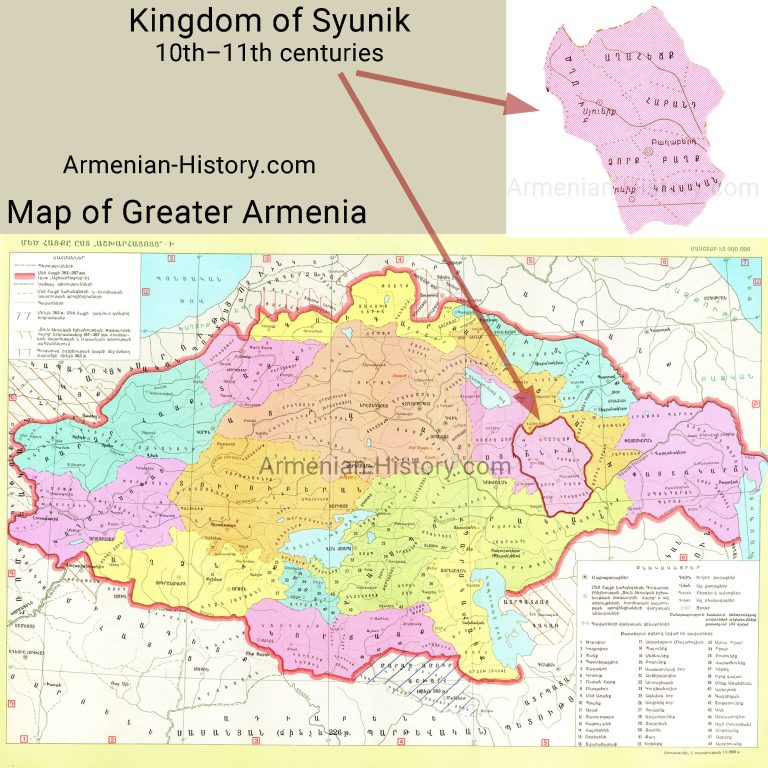The Kingdom of Syunik (Սյունիքի թագավորություն), one of the medieval Armenian kingdoms, emerged in the southeastern region of historical Armenia. It became a significant political entity in the second half of the 10th century due to several key factors, including internal feudal struggles, the temporary weakening of the Bagratuni Kingdom, and external interventions. The Syunid rulers declared independence under Smbat I, who was crowned King of Syunik in in the late 10th century, formally establishing the kingdom.
Historical Context
The rise of the Kingdom of Syunik was closely tied to the strategic and cultural significance of the region. Its elevation to kingdom status was facilitated by powerful local noble families and the region’s geographic distance from the Bagratuni central authority. Despite initial challenges, Syunik maintained its autonomy and became a bastion of Armenian statehood and culture.

In its heyday, the Kingdom of Syunik encompassed major territories, including the regions of Tsghuk, Aghahechk, Haband, Baghk, Dzor, Arevik, and Kovsakan, with its total area exceeding 7,300 square kilometers. The kingdom’s capital was initially in Baghaberd, and later key cities like Kapan played prominent roles.
Rulers and Legacy
The Syunid rulers, beginning with Smbat I, followed by his successor Vasak I and other notable kings, including Smbat II and Grigor I, were instrumental in fostering a strong defensive and cultural legacy. They contributed to the development of key spiritual and educational centers, such as Tatev Monastery, which became a beacon of Armenian culture and scholarship.

By the early 12th century, Syunik faced relentless pressures from Seljuk Turk forces. The situation escalated in 1170 when the Seljuks captured Baghaberd Fortress, considered the “hope and stronghold” of Syunik. This devastating blow marked the end of the Kingdom of Syunik, with the invaders looting over 10,000 manuscripts, sacred relics, and royal treasures. Despite its fall, Syunik’s legacy endured through its spiritual centers and the resilience of its people, who continued to safeguard Armenian traditions in the region.
Cultural Contributions
The Kingdom of Syunik stands out for its contributions to Armenian art, architecture, and governance. Monuments such as Tatev, Vorotnavank, and Vahanavank exemplify the rich architectural and spiritual heritage of the kingdom. These landmarks symbolize the resilience and creativity of the Armenian people.

